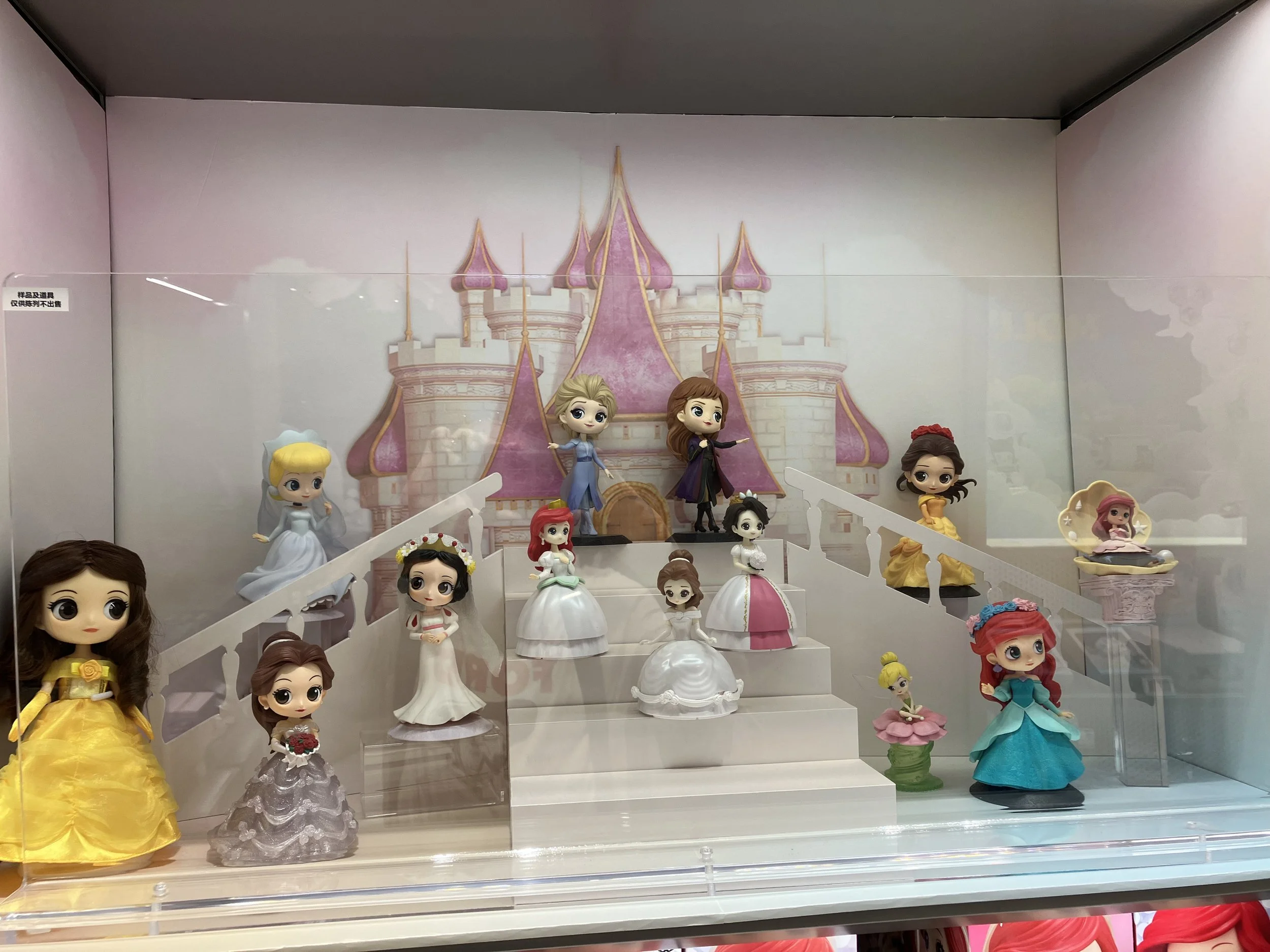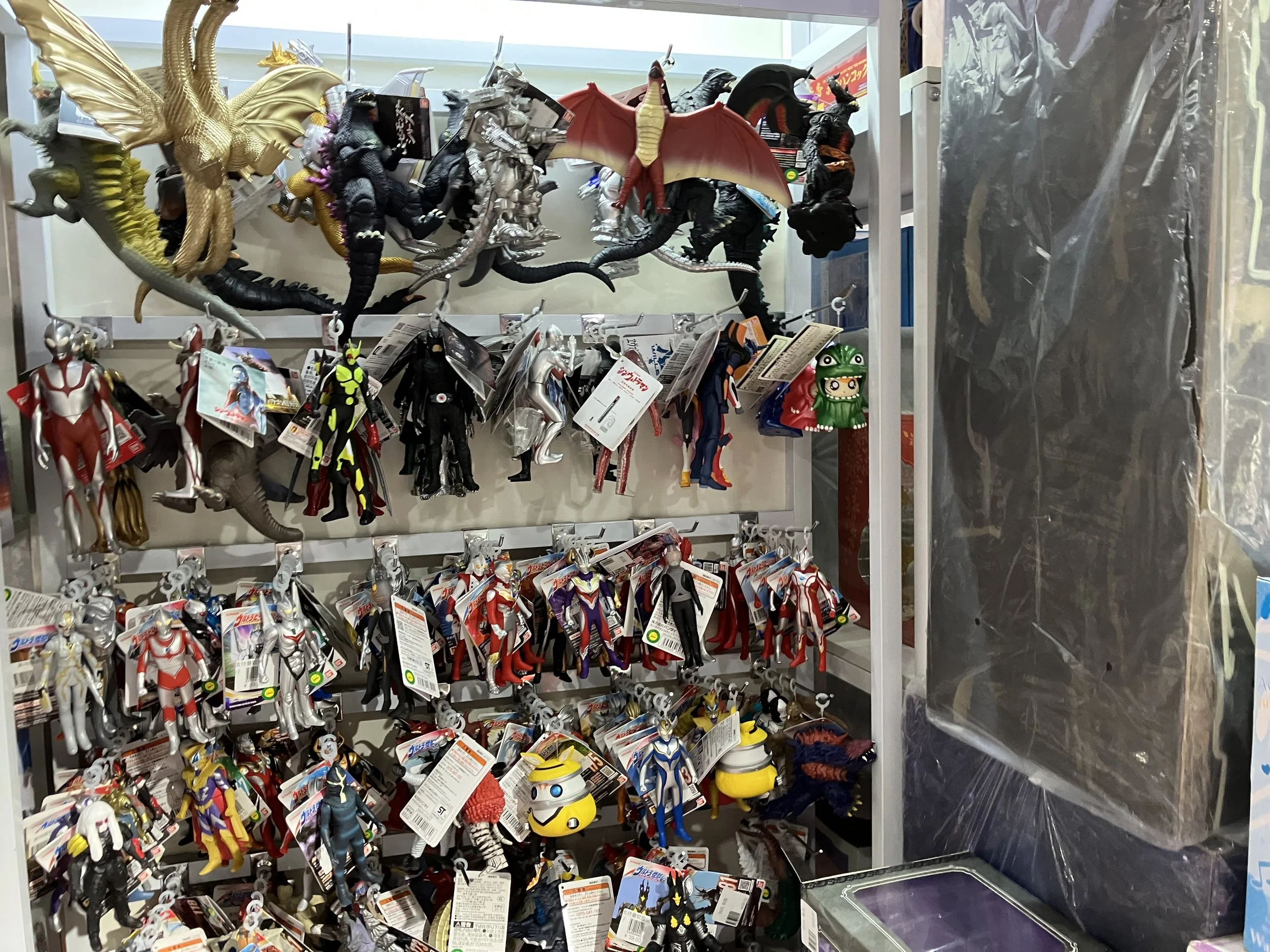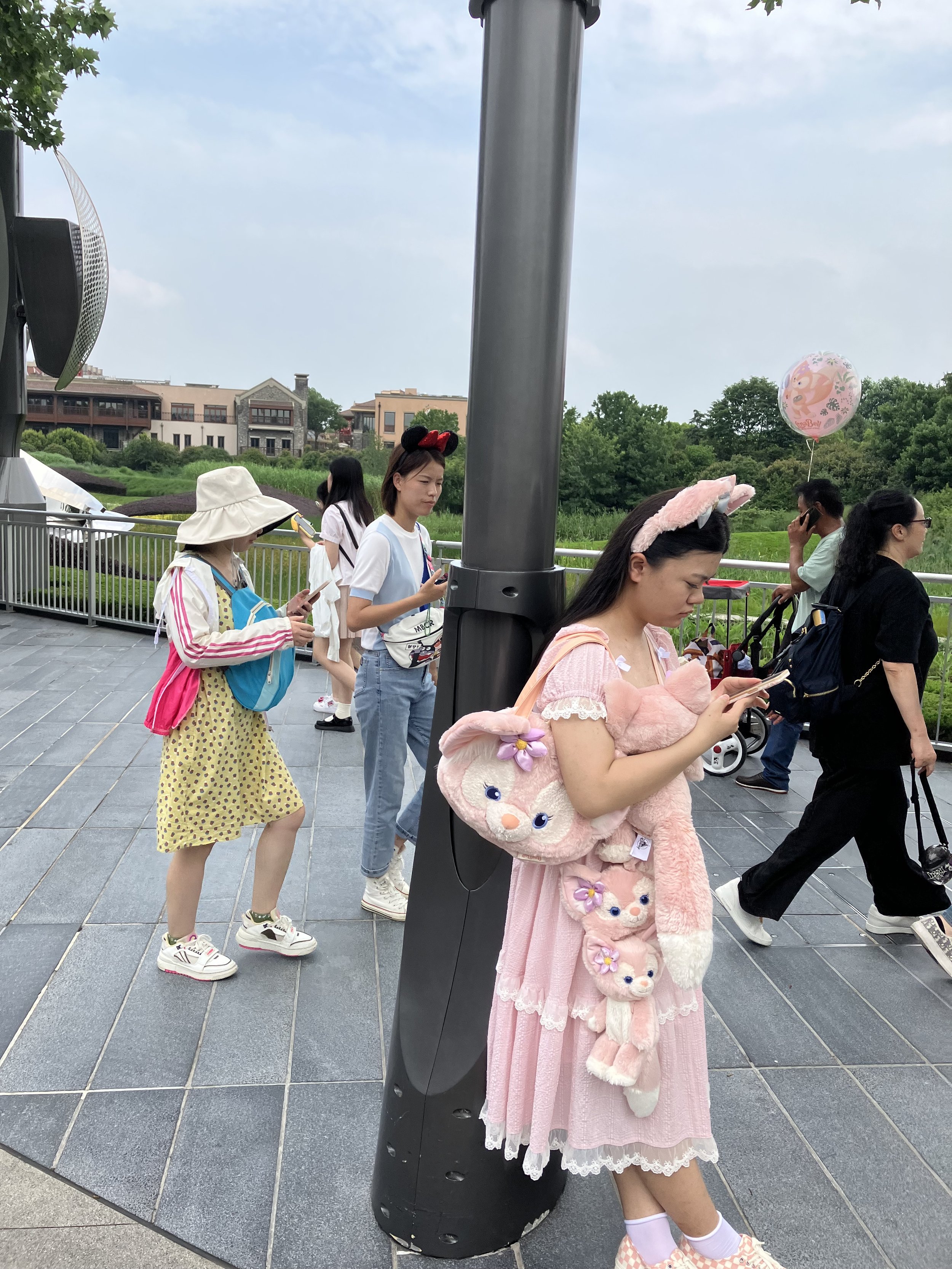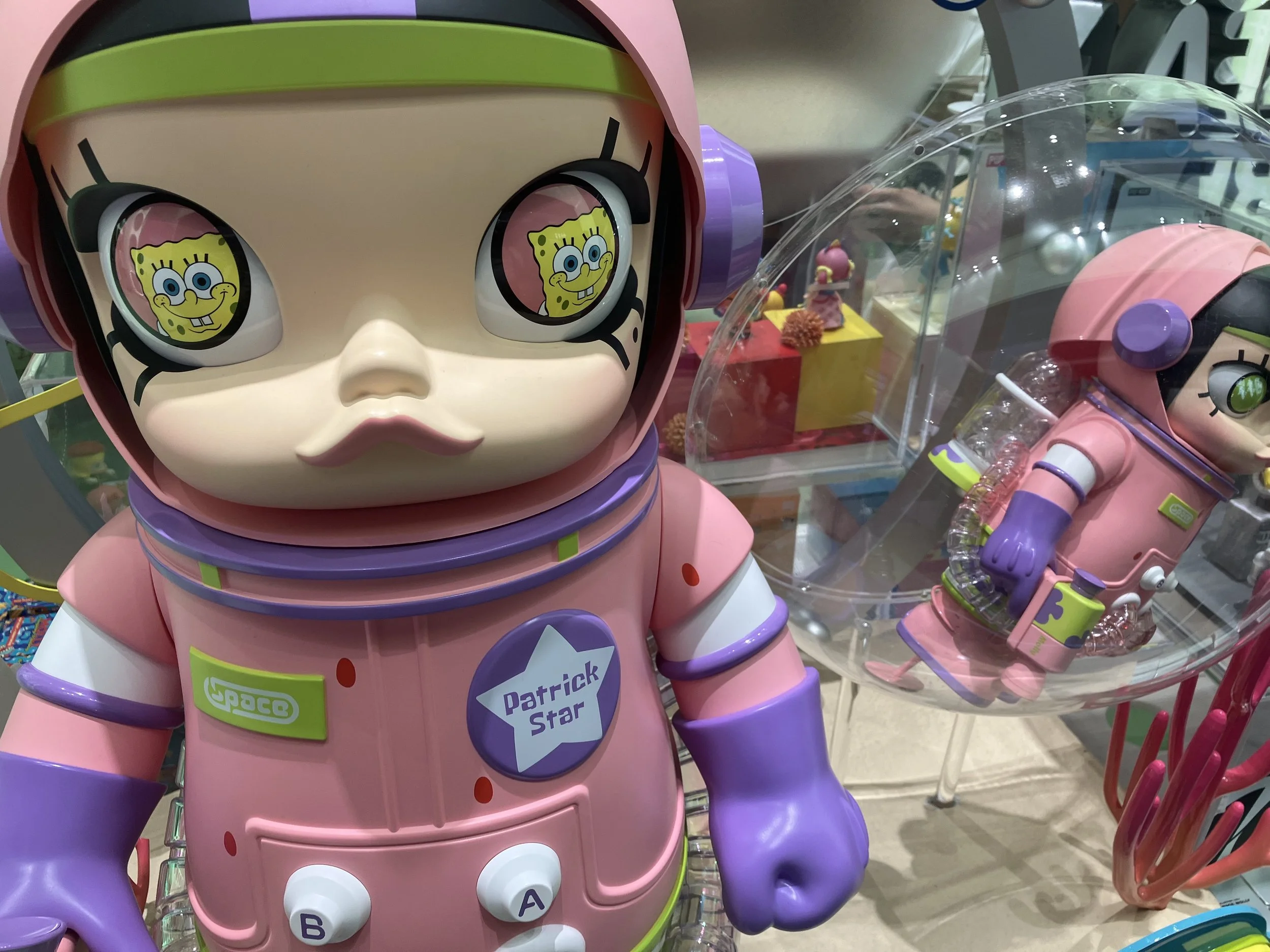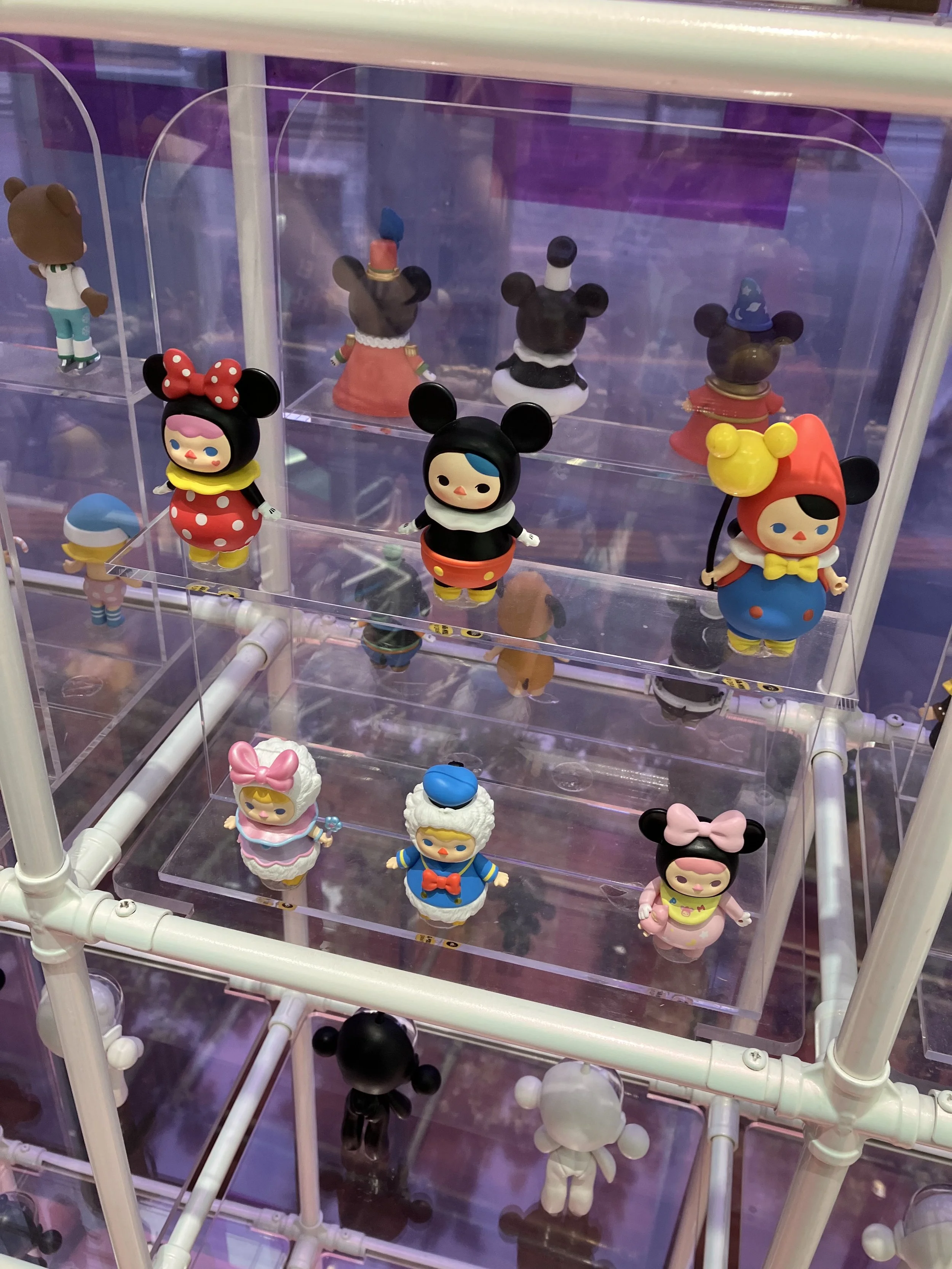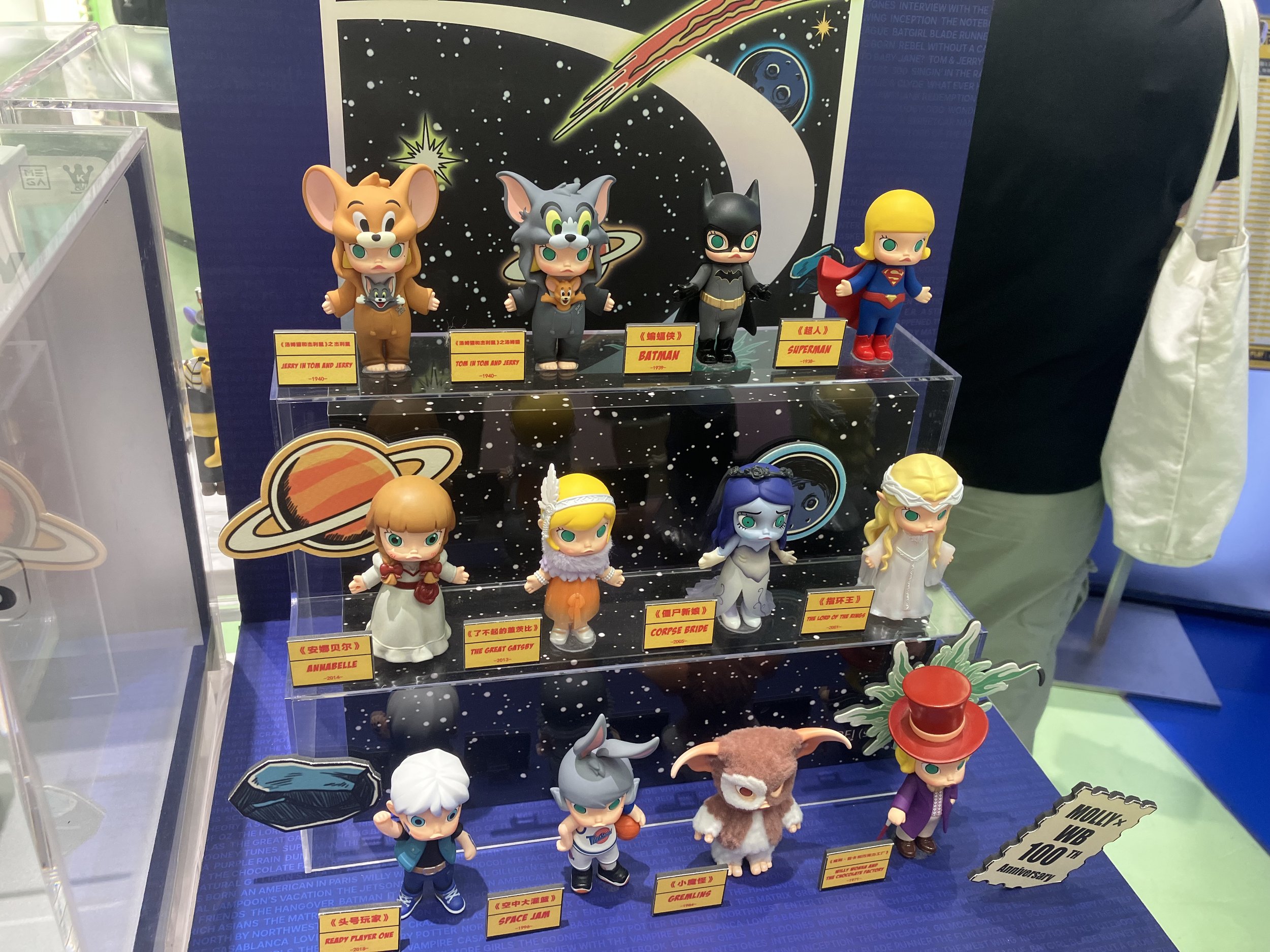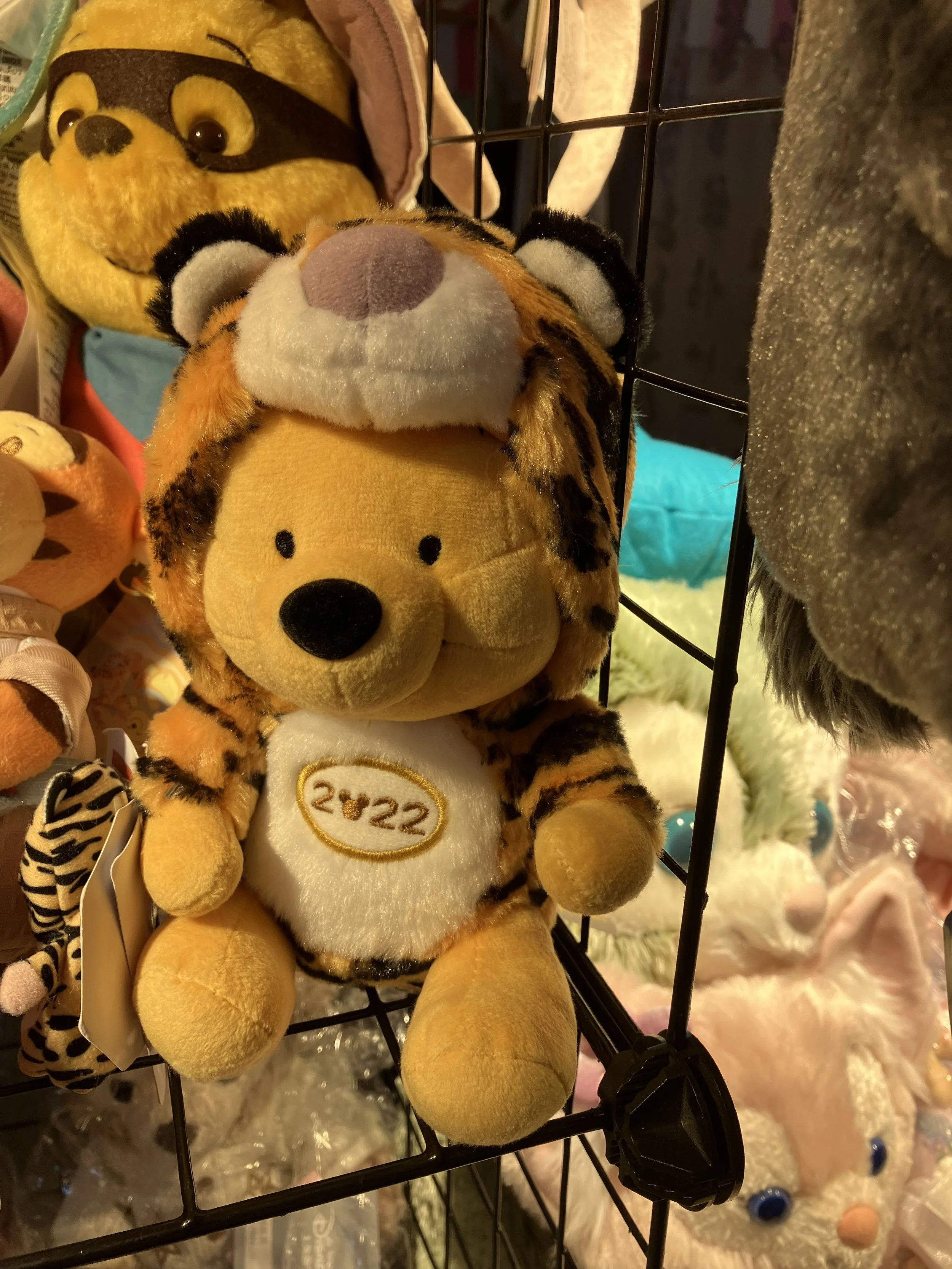Contemplating Molly: Notes on Pop-Mart Toys (Part Three)
/All of this means that Molly was designed to be scrutinized and studied more than she was designed to be played with in any traditional sense. I do fiddle with her and touch her when I see her on my desk, opening and closing her visor or moving her arm up and down, pointing her ray gun at different objects. American toys are sold in terms of the number of different points of articulation, but these toys seem to be selling their limited mobility. These limits, though, mean that she can become more fully an object for introspection; she comes alive only in our imagination. In outlining the different frames we can put around Molly, I am of course mimicking the kinds of daydreaming and contemplation this doll was designed to provoke among young office workers in Shanghai. These toys suck everything towards them, even as they also function as portals into larger imaginary worlds. Molly, much like the Maltese Falcon, is, indeed, the stuff dreams are made of.
Much like the Snape notebook, Pop Mart products apply this distinctively Chinese style to their various imported IPs, as is suggested by these figurines of Ultraman or the Disney Princesses, some of which are unrecognizable to western eyes even though they originate in our media. These familiar characters have been reconceptualized, reconsidered, reimagined, remade, and restoried before they enter circulation in China. From the first, I was fascinated by this process of ongoing g/localization.
image 29
Then, again, there are more high-end toy stores dedicated to toys which reproduce in precise details the range of robots, in particular those of mecha anime series or restaging specific moments from the Ultraman series, which are much more faithful to the original source material than the Pop Mart toys are, but these toy stores tend to attract more men than women. One of my more startling encounters was a window display showing a row of Ultramen being crucified, which I later learned referred to a plot point in one of the Ultraman films. Here, the window display rewards fan knowledge, even as it may startle those who are not in the know. Fandom studies talks about affirmational vs. transformational fans: on that continuum, Pop Mart leans towards the pleasures of transformation.
IMAGE 30
IMAGE 31
IMAGE 32
What makes a character seem promising for this market? Shanghai Disneyland studied the existing characters – Chip and Dale, Lotsa Bear, Winnie the Pooh, etc. – which do well in the Chinese market, discovering recurring trends of cuteness and mischievousness before launching a China-specific IP, the pink fox Linabell, as a friend of the Japanese bear Duffy. A corporate statement characterizes Linabell as “a fox with an inquisitive mind and the intelligence that supports it. She finds joy and excitement in solving problems and mysteries.” Her likeness in the form of t-shirts and stuffed animal head purses can be seen throughout Shanghai and far beyond, signaling how successful the company has been at g/localizing its output. It is hard to know what is the best way to explain how Linabell is decapitated and then worn as a fetish or talisman, as a decorative item, as an accessory to the larger performance of female identity not only inside the theme park but routinely on the streets and especially in the malls.
image 33
IMAGE 34
IMAGE 35
IMAGE 36
Pop Mart layers these foreign influences over their own original IP, so here is a Molly doll dressed in Chinese Astronaut uniform, but we see the face of Spongebob Squarepants reflected in her eyes.
IMAGE 37
Molly and the other original IP characters are often shown wearing mouse ears or cosplaying as characters from international sources, literally enacting the idea that, however foreign their trappings, their core identity remains Chinese.
image 38
image 39
A similar layering of cultural influences can be seen around the practice of Disneybounding. Disneybounding began as a way of working around the rules which are imposed on visitors to their theme parks: adult guests are not allowed to wear any costumes which might confuse other visitors into thinking they were park cast members. To work around these constraints, Disneybounders began to adopt the color palettes or design philosophies of specific Disney characters, seeing how close they could get without triggering a response from the gatekeepers. In that sense, Disneybounding represented a means of negotiating with the constraints that rights holders impose on readers.
Here, for example, these Chinese women adopt Disney characters popular in China into Japanese subcultural street fashion, while others adopt colors and patterns associated with Snow White into Hanfu, both examples of how western content gets translated into Asian fashion.
IMAGE 40
IMAGE 41
Pop Mart is certainly not unique in constructing fan subjectivity as a layered identity. Consider this eye-catching example of an unauthorized Winnie the Pooh plush toy which has Pooh, in effect, cosplaying as Tiger (the most generous read of what’s going on when he wears his friend’s head as a trophy). A still more subversive interpretation might read this toy in relation to Chinese memes which equate Xi Jinping with Winnie the Pooh and Barack Obama with Tiger. I am just not sure how deep one should go in interpreting any political significance here, but the deeper you go as a westerner trying to understand Chinese culture, the more it is clear how little we yet understand what has always been a “yes and…” culture.
image 42
I hope all of this attention on Molly does not come across as too obsessive. Ever since my first visit to a Pop Mart, I have been as much possessed by these toys as I am someone who wants to acquire and possess them. Rumor has it that there may be a Pop Mart coming to Los Angeles, though this may be dangerous to my pocketbook. My one regret is that I did not bring more of them back with me to gift to worthy homes in America.


